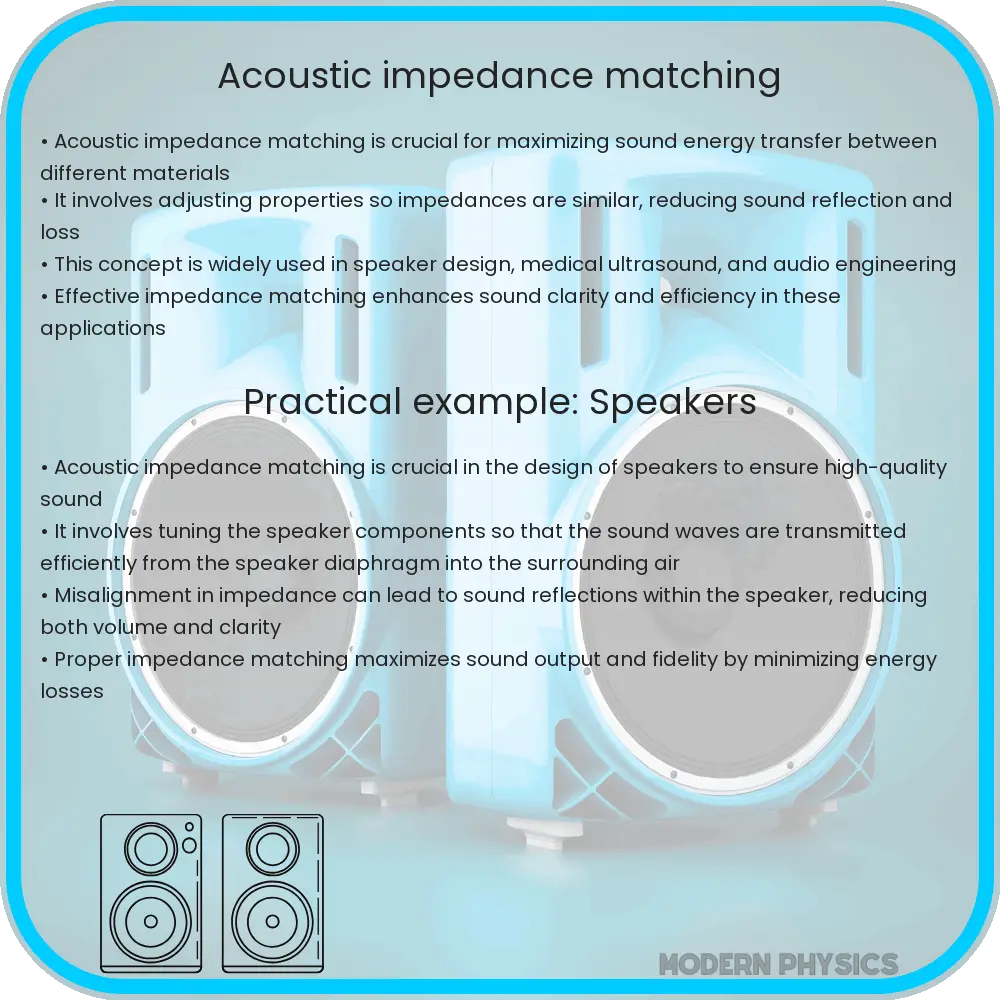Impedance matching represents a fascinating confluence of physics and engineering, seamlessly bridging the realms of theoretical principles and practical applications. This nuanced topic, often overshadowed by its more straightforward counterparts, invites scrutiny into the underlying mechanics that govern waves and signals as they traverse various media. The concept of impedance, essentially the opposition that a system presents to the flow of energy, permeates numerous fields, from acoustics and electronics to optics and beyond. By exploring the intricacies of impedance matching, one may unearth the pivotal role it plays in optimizing system performance, thus heralding a shift in both perspective and capability.
At its core, impedance can be defined in mathematical terms as the ratio of voltage to current in an alternating current (AC) circuit. However, its implications extend far beyond this simplistic equation. In acoustics, for instance, acoustic impedance pertains to the relationship between pressure and particle velocity in a medium, setting the stage for phenomena that dictate sound transmission, absorption, and reflection. Acoustic impedance matching, therefore, enlightens our understanding of how sound waves interact with different materials, effectively enhancing communication, musical performance, and even medical imaging.
To elucidate the principles of impedance matching, one must first delve into the fundamental concept of reflection. When a wave encounters an interface between two materials with differing impedances, a portion of the wave reflects back into the original medium, while another portion transmits into the second material. The percentage of energy that reflects versus transmits is intrinsically linked to the degree of impedance mismatch. A profound illustration of this is observable in the context of musical instruments, where the interface between the strings and the body can dictate the richness of sound produced. By meticulously aligning the acoustic impedances, luthiers can optimize resonance and tonal quality, crafting instruments that resonate in perfect harmony.
Moreover, the significance of impedance matching transcends mere acoustic applications. In the domain of electronics, impedance matching serves as a cornerstone of efficient circuit design. An electrical signal must encounter minimal resistance to ensure maximum power transfer. When a signal traverses from one component to another, an impedance mismatch could result in signal degradation, excessive heat dissipation, and potential circuit failure. This quandary is particularly pertinent in radio frequency applications, where signal clarity and strength are paramount. Engineers, therefore, employ various techniques—such as the use of transformers and matching networks—to facilitate optimal impedance conditions, thereby ensuring fidelity and functionality.
In the context of telecommunications, the role of impedance matching is, perhaps, more pronounced. Modern communication systems rely on the efficient transmission of electromagnetic waves through various media, including cell towers, vast cable networks, and fiber optics. Each segment of these networks presents unique impedance characteristics which, if left unaddressed, can lead to significant signal loss. Techniques such as stub matching and the implementation of quarter-wave transformers allow for the precise calibration of impedance across transmission lines. The resultant clarity and speed of data transmission hinge on such adjustments, elucidating the profound impact of physics on contemporary communication infrastructures.
The promise of impedance matching does not end with the refinement of existing technologies; it also paves the way for novel innovations. For instance, the burgeoning field of metamaterials—engineered composites designed to manipulate electromagnetic waves—has illuminated new possibilities for impedance adaptation. The desired electromagnetic responses, precipitated by finely tuned impedance profiles, pave the way for applications in invisibility cloaks, superlenses, and beyond. This confluence of materials science and applied physics unveils unprecedented opportunities for exploration and discovery, inviting a reevaluation of established paradigms.
Yet, the exploration of impedance matching is not without its challenges. Achieving ideal impedance conditions across varied materials often necessitates sophisticated and costly equipment, alongside an extensive understanding of the underlying physics. Additionally, dynamic conditions—such as temperature fluctuations, pressure variances, and other environmental factors—pose considerable challenges to maintaining impedance stability over time. The ongoing research into adaptive systems and real-time impedance monitoring heralds a new era of responsiveness, wherein systems can self-correct and adjust to changing conditions, enhancing reliability and performance.
As the discourse surrounding impedance matching continues to evolve, a reexamination of its conceptual foundations prompt significant implications across diverse domains. The understanding that sound and energy propagate through physical media characterized by tangible properties affords both a theoretical and practical framework for innovation. Scientists and engineers alike are challenged to think beyond conventional boundaries, fusing creativity with empirical analysis to cultivate solutions that resonate on a global scale.
Impedance matching is, indeed, a vivid illustration of physics meeting perfect harmony. As has been demonstrated, it weaves significant threads that tie together disparate fields, providing both insight and utility. Moreover, the journey of exploring impedance—dating from its rudimentary applications to its tantalizing potential in future innovations—underscores a central truth: by harmonizing differences in opposition, we unlock the potential for enhanced performance, innovation, and communication. In this vibrant landscape, it is the pursuit of that harmony that holds the promise of unleashing the next wave of technological advancements and creative breakthroughs.












